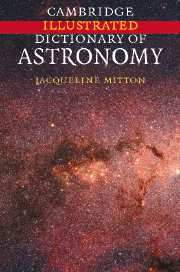Summary
Sagan, Carl Edward (1934–1996) The American planetary scientist Carl Sagan was one of the most well-known and influential figures in astronomy in the USA during his lifetime. He was particularly known for his interest in extraterrestial life and he strongly advocated searching for extraterrestrial intelligence. As an advisor to NASA, he contributed to many of NASA's planetary exploration space missions. A gifted popularizer, he wrote several bestselling books. His television series Cosmos, first shown in 1980, was an enormous success. In it Sagan examined a wide range of issues in science, particularly the origin of life in the universe. From 1968 he worked at Cornell University and directed the Laboratory for Planetary Studies there.
Sagitta (The Arrow) The third-smallest constellation, but nevertheless a distinctive little group of stars. The two brightest stars are third magnitude. It lies in a rich part of the Milky Way, next to Aquila.
Sagittarius (The Archer) The southernmost constellation of the zodiac. The center of the Galaxy (the Milky Way) lies behind the star clouds in Sagittarius. It is a large constellation, with many bright stars. It also contains a large number of star clusters and nebulae. The ➤ Messier Catalogue lists 15 objects in Sagittarius, more than in any other individual constellation. They include the ➤ Lagoon Nebula, the ➤ Trifid Nebula, the ➤ Omega Nebula and the third brightest ➤ globular cluster in the sky, M22.
Sagittarius A The strongest radio source in the constellation Sagittarius.
- Type
- Chapter
- Information
- Cambridge Illustrated Dictionary of Astronomy , pp. 300 - 341Publisher: Cambridge University PressPrint publication year: 2007

